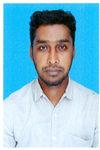Day 3 :
Keynote Forum
Glenn S Tillotson
Cempra Pharmaceuticals, USA
Keynote: New macrolides: A much needed evolution
Time : 09:00-09:30

Biography:
Glenn S Tillotson has over 30 years pharmaceutical experience in pre-clinical and clinical research, commercialization, medical affairs, scientific communications including publication planning strategic drug development, life cycle management and global launch programs. He has been instrumental in the development and launch of ciprofloxacin, moxifloxacin, gemifloxacin, fidaxomicin and several other agents. He is a SVP of Medical Affairs where he is preparing for the launch of solithromycin for community acquired bacterial pneumonia. He has published more than 170 peer-reviewed manuscripts and is on several journal Editorial Advisory Boards including the Lancet Infectious Disease, eBioMedicine, Expert Reviews in Anti-infective Therapy and F1000.
Abstract:
The macrolide class of antibiotics has been in clinical use for over 50 years being the backbone of many empirical therapies in both adults and children. The first of the class was erythromycin which was acid labile and of modest antibacterial activity thus clarithromycin was chemically modified from the parent molecule to yield a more acid stable drug with better activity. Additionally it could be given twice a day. Soon after this improvement azithromycin was developed as a once a day drug with an almost similar bacterial profile. However as these antibiotics was used extensively often as initial therapy in a broad range of respiratory infections across the globe resistance developed by two different mechanisms and thereby reducing activity against Streptococcus pneumoniae quite significantly. Indeed in some parts of Asia resistance rates of 80-90% are reported although in the USA it is currently around half of all strains are resistant to the most frequently prescribed oral drug for community acquired pneumonia. In view of this the first ketolide telithromycin was developed to be active against the resistant pneumococcal isolates. It was used very broadly in respiratory tract infections and was soon noticed to cause several severe adverse reactions including liver failure, visual disturbances, neurological events and other significant reactions. In the intervening decade solithromycin, a fourth generation macrolide and the first fluoroketolide has been developed initially for community acquired bacterial pneumonia based on its superior antibacterial activity especially against azithromycin resistant pneumococci based on a unique mode of action. The clinical dossier is with the FDA for review by end of 2016.
Keynote Forum
Eugenie Bergogne-Berezin
Centre Hospitalo-Universitaire Bichat-Claude Bernard, France
Keynote: Rationale approach to combat resistance
Time : 09:30-10:00

Biography:
Eugenie Bergogne-Berezin is a Professor of Clinical Microbiology at University Diderot, Paris. She has studied MD in Medicine and PhD in Sciences in the early 1970s. She is a Chief of Department of Clinical Microbiology and research group, University Bichat Claude-Bernard and developed research on Acinetobacter spp., (nosocomial pathogen, pathogenicity, resistance), pharmacology of antibiotics, tissue distribution (lungs, brain, bronchi), research on intestinal ecology, jejunal flora and bacterial adhesion. She is an Adviser to pharmaceutical companies, expert in pharmacology-toxicology for the Ministry of Health, expert for international journals. She has developed a journal Antibiotics, (Elsevier). She has published 6 medical books, many chapters in international infectious diseases books, 200 articles in scientific journals.
Abstract:
After 60 years of use of antibiotics, the world experienced antibiotic resistance. Dissemination of genes of resistance in hospitals, in population has imposed to experts to look for measures to combat resistance, major challenges in developed countries. Combat antibiotic resistance includes knowledge of resistance mechanisms, role of genes associated to gene cassettes, multidrug resistance with transmissible plasmids, efflux mode of resistance, role of integrons in acquisition of resistance genes. Among pharmacologic factors, antibiotic distribution in body at site of infection, low serum concentrations (sub-MICs) are factors for emergence of resistance; intracellular concentrations of macrolides, fluoroquinolones are needed to eradicate intra-cellular Legionella, chlamydia. Pharmacokinetic parameters are factors for proper use of antibiotics to combat resistance. Research for new antibiotics is developing in Biotech companies: Rehabilitation of antibiotic classes (glycopeptides, ketolides, oxazolidinones) to overcome resistant Gram positive bacteria; a renovated cyclic peptide colistin (polymyxin) active against “super-bug” Acinetobacter baumannii. β-lactamase inhibitors clavulanate, sulbactam, tazobactam did not solve resistance related to β-lactamases C, D, carbapenemases: New β-lactamase inhibitors NXL-104, MK-7655 restore activities to imipenem, 3d generation cephalospsorins. Newer drugs based on integrated new tools, combinatory chemistry, high speed parallel synthesis, genomics and proteomics, able to lead to new bacterial targets: DNA replication, target genes, cellular division, secretion of efflux pumps. Inhibition of virulence of bacterial communication systems, immunomodulatory systems are leading to new molecules: Artilysins as cell wall targets, Torezolid, active on MRSA, Iclaprim (a diaminopyridine-dihydrofolate reductase) inhibits VRSA. The current clinical development estimated in March 2015 the number of new antibiotics to 36 molecules in clinical development in the US.
Keynote Forum
Stef Stienstra
Dutch Armed Forces/Royal Dutch Navy, Netherlands
Keynote: Investing in public health gives especially in low income countries extremely impressive returns
Time : 10:00-10:30

Biography:
Stef Stienstra is a strategic and creative Consultant in Biomedical Science with a parallel career as a Commander of the reserve of the Royal Dutch Navy. For the Dutch Armed Forces he has responsibility for the counter measures in CBNRe threats and (Medical) consequence management both in a military and a civilian (terrorism) setting. He is a strategic functional specialist for “Health & Environment” of the 1-Civil-Military-Interaction Command (1-CMI) of the Dutch Armed Forces and for 2015 also in the NATO Response Force (NRF), which is in 2015 the responsibility of the 1-German-Netherlands-Corps (1-GNC). In his civil career he works internationally as Consultant or as Scientific Supervisory Board Member for several medical and biotech companies, merely involved in biodefense. He is also a Visiting Professor for Punjab University in Pakistan and Rhein-Waal University in Germany. He has completed his studies in Medicine and in Biochemistry at the University of Groningen in The Netherlands and has extensive practical experience in cell biology, immuno-hematology, biodefense and transfusion medicine. His natural business acumen and negotiation competence helps to initiate new successful businesses, often created out of unexpected combinations of technologies. His good understanding of abstract science combined with excellent skills in the communication of scientific matters to non-specialists, helps him with strategic consulting at top level management.
Abstract:
The implementation of the International Health Regulation (IHR) of WHO in 2005 for worldwide public health systems is already in its second extension phase. At the 2012 deadline only 16% of the countries were fully prepared to detect and respond to pandemics. In 2014 the Ebola Virus Disease outbreak in West Africa was another indicator that WHO’s IHR has to be taken seriously. Especially the biosecurity part of IHR is not fully in place yet for most developing countries which make the world vulnerable for bioterrorism. The returns from investing in public healthcare are extremely impressive and are not a high risk venture as with a rapid mortality decline many ‘value life years’ (VLYs) are gained. For low and middle income countries typically about a quarter of the growths full income resulted from VLYs gained and supports not only the local economy but also the world economy. Therefore several international programs help to prepare low and middle income countries to mitigate outbreaks of infectious diseases. EU CBRN CoE initiatives and the US CBEP, DTRA, CTR, GEIS, DIMO, USAID, PEPFAR and several other programs are involved in establishing public health systems and give local healthcare workers trainings in both disease outbreak mitigation and biosecurity. Zoonotic diseases are the most dangerous for outbreaks as the population does not have natural nor artificial (from vaccination) immune response to new emerging diseases. The recent Ebola Virus Disease outbreak in West Africa was such an example and with proper blood bank facilities in place, the therapy with immunoglobulins obtained from plasma donations survivors was a relatively cheap and effective therapy. International there was some criticism, as for this therapy it is extremely important that the convalescent plasma has to be safe for other blood transmissible diseases but as with other convalescent plasma therapies is feasible, the necessary safety tests can be done also in the laboratories which are installed for the outbreak diagnosis. Convalescent plasma can be obtained from a donor who has survived the disease with a novel hollow fiber blood separation technology of Hemanua and immunoglobulin concentration, which does not need have any sophisticated infrastructure. This patented and recently developed disposable device is developed in cooperation with the Irish Blood Transfusion Service.
Keynote Forum
Ashok Kapse
Mahavir Super Specialty Hospital, India
Keynote: Emerging and re-emerging infections
Time : 10:30-11:00

Biography:
Ashok Kapse is a consulting Pediatrician practicing in the city of Surat in the Gujarat state of India, besides owning a private pediatric hospital he is also the Head of the Pediatric Department at a prestigious Mahavir Super Specialty Hospital. After completing graduation (MBBS) he did MD in Pediatrics. Initially he has worked as a Professor of Pediatrics at Medical College Surat, later he opted out for private practice however pursued academic interest. He has developed special interest and skills in infectious diseases. He is a recipient of many oration awards and delivered hundreds of lectures on dengue, malaria, typhoid and antibiotic uses across India. He has decorated many posts in medical fields: President of Surat City Branch of Indian Academy of Pediatrics (IAP), President of Gujarat State Branch of IAP and National President of Infectious Diseases Branch of IAP are few of them. He is an avid Clinical Photographer; his photos figure into various books and atlases including the prestigious atlas of infectious diseases published by American Academy of Pediatrics. He has published umpteen articles in peer reviewed journals.
Abstract:
We can look forward with confidence to a considerable degree of freedom from infectious diseases at a time not too far in the future. Indeed, it seems reasonable to anticipate that within some measurable time, all the major infections will have disappeared. T. Aidan Cockburn: The Evolution and Eradication of Infectious Diseases; 1963. Five years later the U.S. surgeon general noted that it might be possible with interventions such as antimicrobials and vaccines to “close the book” on infectious diseases and shift public health resources to chronic diseases. How shoddily wrong they were; at about same time there were trickling reports about a crippling wasting disease among Africans which was noticed by missionaries. Soon world realized that these were the earliest cases of a newly emerging infectious disease: HIV/AIDS. The incidence of emerging infectious diseases in humans has increased within the recent past or threatens to increase in the near future. Over 30 new infectious agents have been detected worldwide in the last three decades; 60 percent of these are of zoonotic in origin. A newly emerging disease is a disease that has never been recognized before. HIV/AIDS is an emerging disease, so is severe acute respiratory syndrome (SARS) and a recent H1N1 pandemic. Re-emerging, or resurging diseases are those that have been around for decades or centuries but have come back in a different form or a different location, few of the examples are emergence of microorganisms resistant to antimicrobials to which these were previously sensitive, P. vivax acquiring severity, resurgence of diphtheria & Pertussis and recent Ebola outbreak. Microbes could also be the agents of bioterrorism, they are intentionally introduced to harm mankind and thereby they become instruments of deliberately emerging diseases the most recent and important example of which is anthrax. The human species lives in a delicate balance with microbial species; there is an ever-present tension between the two. If we perturb this balance, microbes almost always figure out a way to counterbalance the effect; encroachment of human civilization on the environment and on the microbial species that inhabit our environment invariably triggers emergence or reemergence of infectious diseases. Multiple factors like forest land use for economic development, human demographics & behavior and ever increasing international travel contribute to the emergence and re-emergence of infectious diseases. Two fundamental characteristics of microbe’s namely rapid replication and mutation allow them to circumvent our attempts to control them. Their ability to replicate and mutate gives them the advantage of selectively circumventing human interventions, be they antimicrobials, vaccines or public health measures. In this battle with microbes we the humans have two important weapons in our armamentarium: an intellect and a will. We use our intellect and will to implement public health measures, biomedical research and technological advances to contain or at least strike a balance with microbial species that rely on genes, replication and mutation.“The future of humanity and microbes likely will unfold as episodes of a suspense thriller that could be titled “Our Wits versus Their Genes”; so rightly said by Dr. Joshua Lederberg.
Keynote Forum
Lalit Garg
University of Malta, Malta
Keynote: Infectious disease progression modeling
Time : 11:00-11:30

Biography:
Lalit Garg has received his PhD degree from the University of Ulster, UK in 2010. He has received his first degree in Electronics & Communication Engineering from the Barkatullah University, India in 1999 and Postgraduate degree in Information Technology from ABV-IIITM, Gwalior, India in 2001. He is currently a Senior Lecturer in Computer Information Systems at the University of Malta, Malta. He was a Researcher at the Nanyang Technological University, Singapore and at the University of Ulster, UK. His research interests include missing data handling, machine learning, data mining and their applications especially in the healthcare domain. He has published more than 60 technical papers in refereed journals and conferences.
Abstract:
Models which can predict disease progression are useful for aiding clinicians in prescribing the correct treatment at the optimal time to produce the best outcome for the patient. Positive correlations between changes in a patient’s infection state with respect to other factors of the patient’s profile such as age, gender and treatment. We utilize artificial neural networks and phase type survival trees with differing combinations of input covariates to find which ones provide the best predictor of the future state. To demonstrate the model, we used a dataset of 1,838 patients infected with the human immunodeficiency virus (HIV) which were enrolled in the Italian public structures between January 1996 and January 2008. The proposed disease progression models effectively cluster, identify and quantify the effects of these covariates and their interaction in the prediction of HIV disease progression. Our results show that antiretroviral treatment (ART) is the best prognosticator of a patient’s future state followed by the CD4+ T-lymphocyte measurement. Other covariates such as gender and age have little impact on the overall accuracy in prediction. Results improved dramatically when predicting if the patients’ next state was AIDS (Acquired immunodeficiency syndrome). These results should aid in the management of HIV and its treatment while the methods developed through this research can also be useful for modeling disease progression in patients who have other chronic conditions or diseases such as tuberculosis (TB), the severe acute respiratory syndrome (SARS), cardiovascular disease (CVD), cancer and diabetes.
Keynote Forum
K C Santosh
University of South Dakota, USA
Keynote: Automated chest X-ray screening for the evidence of pulmonary abnormalities
Time : 11:50-12:20

Biography:
K C Santosh worked as a research fellow at the U.S. National Library of Medicine (NLM), National Institutes of Health (NIH). He worked as a postdoctoral research scientist at the LORIA research centre, Universite de Lorraine in direct collaboration with industrial partner ITESOFT, France, for 2 years. He also worked as a research scientist at the INRIA Nancy Grand Est research centre for 3 years, until 2011. K C Santosh has demonstrated expertise in pattern recognition, image processing, computer vision and machine learning with various applications in handwriting recognition, graphics recognition, document information content exploitation, medical image analysis and biometrics. He published more than 60 research articles, including a book section in encyclopedia of electrical and electronics engineering.
Abstract:
The talk is aimed at presenting an automatic chest X-rays screening system to detect pulmonary abnormalities using chest X-rays (CXR) in non-hospital settings. In particular, the primary motivator of the project is the need for screening HIV+ populations in resource-constrained regions for the evidence of Tuberculosis (TB). The system analyzes thoracic edge map, shapes as well as symmetry that exists between the lung sections of the posteroanterior CXRs. In this study, we have used two CXR benchmark collections made available by the U.S. National Library of Medicine and have achieved a maximum abnormality detection accuracy of 88.67% and the corresponding area under the ROC curve of 0.95, which outperforms the reported state-of-the-art.
- Track 06: Clinical Studies and Case Reports
Track 09: Mechanism of Resistance
Track 15: Tuberculosis
Track 16: Hepatitis
Track 25: Antibiotic Resistance

Chair
Stef Stienstra
Dutch Armed Forces/Royal Dutch Navy, Netherlands

Co-Chair
Rachel Groppo
Sanofi Pasteur, USA
Session Introduction
Roland N Ndip1, 2, C Njume1, A J Afolayan1 and E Green1
1University of Fort Hare, South Africa
2University of Buea, Cameroon
Title: Volatile compounds in the stem bark of Sclerocarya birrea (Anacardiaceae) possess antimicrobial activity against drug-resistant strains of Helicobacter pylori
Time : 12:20-12:40

Biography:
Roland N Ndip has obtained his PhD in 1994 from the Edo State University, Nigeria. He has worked as a Professional Microbiologist for over 20 years successively at Edo State University, Nigeria; University of Fort Hare, South Africa and the University of Buea, Cameroon rising to the rank of Professor of Microbiology. His research has concentrated in the areas of microbiology, molecular biology, antimicrobial chemotherapy and alternative and complementary medicine. He has published over 100 articles in international peer reviewed journals of repute. He currently serves as a Registrar at the University of Buea, Cameroon.
Abstract:
The aim of this study was to isolate and identify phytochemicals with anti-Helicobacter pylori activity from the stem bark of Sclerocarya birrea. The plant crude extract was fractionated by silica gel column and thin layer chromatography techniques; initially with ethyl acetate (EA) and subsequently with a combination of ethyl acetate/methanol/water (EMW). Further fractionation and identification of the phyto-constituents was achieved by gas chromatography and mass spectrometry (GC/MS) analysis. The antimicrobial activity of the fractions and compounds was evaluated against 5 metronidazole and clarythromycin-resistant strains of H. pylori and a reference strain ATCC 43526 using micro-broth dilution technique. Amoxicillin was included in these experiments as a positive control antibiotic. Sixteen of the 18 fractions collected demonstrated anti-H. pylori activity with minimum inhibitory concentration (MIC50) values ranging from 310-2500 µg/mL. Two of the fractions; EMW fraction 6 and EA fraction 1 revealed the presence of 5 and 24 compounds respectively representing 40.5% and 86.57% of the total composition. Most of the compounds were essential oils with terpinen-4-ol being the most abundant agent (35.83 %), followed by pyrrolidine (32.15 %), aromadendrene (13.63%) and α-gujunene (8.77%). MIC50 values for amoxicillin, terpinen-4-ol and pyrrolidine ranged from 0.0003-0.06 µg/mL, 0.004-0.06 µg/mL and 0.005-6.3 µg/mL respectively. The inhibitory activities of terpinen-4-ol and pyrrolidine were similar to amoxicillin (P>0.05). Most of these compounds are being reported in this plant for the first time and may represent new sources of therapeutically useful compounds against H. pylori.
Neeraj Kumar Tulara
Dr L H Hiranandani Hospital, India
Title: Fever protocol at emergency department to reduce the use of antibiotics and antibiotic resistance
Time : 12:40-13:00

Biography:
Neeraj Kumar Tulara has completed his Post graduate Diploma in Infectious Disease from South Wales University, Australia. He is a Diplomate at National Board-Internal Medicine, India. He is an MBBS (Bachelor of Medicine and Surgery), India. He is a Member of IDSA, USA. He is an Editor for SM Tropical Medicine Journal, USA and a Reviewer of Biomedical Sciences, USA.
Abstract:
Background: Fever is most common presentation of any disease of any etiology. For children many fever protocol has been practiced in developed and also developing world but for fever in adult patients there are paucity of literature about how to investigate and treat the adult patient presenting first time with the fever in emergency care.
Objective: Objective of this study is to devise standard care pathway for all adults who presents with fever with no localizing signs in order to avoid unnecessary investigation and unwanted antibiotics. After devising fever protocol, pilot study was performed to see its effectiveness.
Methods: A protocol was formulated for all adults presenting with fever without any signs of SIRS and no localizing signs to suggest the clear etiology of the fever. Initial investigations were based on duration of fever, type of fever and associated symptoms along with fever. Treatment was based on the results of investigations. A pilot study was conducted wherein all adults with fever were included and data were analyzed.
Results: During the 3 month study period 1109 adult patients were presented with fever in emergency department, out of them 876 were fitting in the parameters of devised protocol with 659 patients were presented within the first 48 hours of the onset of fever. All patients experienced the defervescence of the fever. Of the patients presented within 48 hours, 69.8% (460/659) defervesced without the need of any investigations and 63.2% (416/659) defervesced without the need of any antibiotic therapy.
Conclusion: Implementation of fever protocol in emergency care department helped to reduce the unnecessary investigation and antibiotics. Thus reducing the cost of the management of fever and also the most important is to help in reducing the antimicrobial resistance by reducing the unwanted used of antimicrobials.
Ashraf Osman Abdellatif Mohamed1, 2, Suad Y Alkarib1 and Alaa M Shawkey2
1Karary University, Sudan
2Cairo University, Egypt
Title: Development of nano-based microemulsion from tea tree oil and silver nanoparticles and assessment of their enhanced antimicrobial activities against representative wound infecting pathogens
Time : 13:00-13:20

Biography:
Ashraf Osman Abdellatif Mohamed is currently a PhD student at Faculty of Pharmacy, Cairo University, Egypt. He has published five papers in reputed journals.
Abstract:
Combining and incorporating of the natural antimicrobials with metal nanoparticles is a growing research area because of their potential applications in nanomedicines to enhance and synergize their activity as well as to minimize unwanted side effects by using lower concentrations. The aim of the present study was to investigate the feasibility of using tea tree oil (TTO) and greenly synthesized silver nanoparticles (AgNPs) alone and in micro emulsion combination formula against representative wound infecting pathogens namely; Staphylococcus aureus, methicillin resistant Staphylococcus aureus (MRSA), Pseudomonas aeruginosa and Candida albicans. The result of the bioassay showed that both TTO-AgNPs combination possesses a potential antimicrobial property. Based on the minimum lethal concentration (MLC), the fractional lethal concentration index (FLCI) showed that treatment with combinations of TTO and AgNPs exerted a synergistic effect against MRSA (FLCI=0.233) followed by P. aeruginosa (FLCI=0.263) and indifferent effects against S. aureus and C. albicans (0.53 and 0.73, respectively). As well, analysis of the morphological changes in S. aureus cells by transmission electron microscope (TEM) revealed that, AgNPs aggregated and located non-specifically on the cell wall, also, AgNPs were seen within the cell wall or the cell of bacteria. The cells became severely distorted and disrupted showing a bactericidal action when compared to untreated cells. In conclusion, these results showed the potential of using TTO and AgNPs in form of micro-emulsion combination and this could be developed into a broad spectrum pharmaceutical product for treating wound infections.
Ahmad Shah Farhat
Mashhad University of Medical Sciences, Iran
Title: Contaminations of devices, solutions and personal hands result at NICU, Emam Reza Hospital, Mashhad City, North East Iran

Biography:
Ahmad Shah Farhat assistant professor of neonatology has completed neonatology subspecialty Mashhad University of Medical Sciences, Iran. I am vice chancellor of Neonatal Research Center in this university since 2006 and consultant neonatologist of neonatal intensive care unit since 1992 up to now. I have published 66 papers locally and international journal, 19 books, 71 supervision of thesis in general medicine, pediatric, and neonatology, 120 participation in national and international congress with lecture and poster presentation. I was member of 50 national scientific organs during last 23 years. I have 10 scientific honors in pediatric and neonatology.
Abstract:
Introduction: Infection is a common cause of neonatal death, nosocomial infection may increase neonatal death at NICU, as we know the nosocomial infection is more than 11% at NICU, we decide to study the result of contamination of devices solutions and personal hands at NICU and based on the type of bacteria and the device which is contaminated we take the serious steps for prevention of contaminating and its disinfection.
Method: All devices and solutions which were related to neonates studied with culture during Jan 2014-Jan 2015 at NICU of Emam Reza Hospital, Mashhad, Iran. Two samples were taken by head nurse weekly. If the culture was positive after disinfection of devices another's culture was taken.
Result: From155 samples, 66 samples were sterile (42/6%) and 89 (57/4%) contaminated. Common organisms were gram positive non pathogen (25/8%), Staphylococcus coagulase negative (12/9%) and Staphylococcus aureus (6/5%).
Conclusion: This study shows that the common contaminable organisms are same as nosocomial organisms at our NICU and common contaminated places are incubator and personal hands.
Recommendation: Attention to disinfection of incubators and hands washing at NICU will be very important factors for contamination control.
Mohammad Reza Hashempour
Golestan University of Medical Sciences, Iran
Title: The evaluation of concentration of calprotectin in pleural fluid with causes of exudative pleural effusion

Biography:
Mohammad Reza Hashempour has completed his Doctorate from Army University of Medical Sciences and Postdoctoral studies in Surgery from Golestan University School of Medicine. He has published papers in reputed journals.
Abstract:
Background: Nowadays, routine invasive techniques to diagnose the causes of exudative pleural effusion are going to be replaced by new non-invasive methods such as biomarkers which with the same diagnostic accuracy can confirm malignant situations at least in a group of cases who do not need more invasive means.
Aim: To evaluate concentration of calprotectin in pleural fluid with causes of exudative pleural effusion
Materials & Methods: In this descriptive-analytical and case-control study, the calprotectin concentrations in pleural fluid was evaluated in 90 patients with exudative pleural effusion and compared among two groups including 34 patients with malignant pleural effusion (MPE) and 56 patients with benign pleural effusion (BPE) in Sayyad Shirazi Hospital in Gorgan of Iran in 2014. All patients underwent examination and the necessary laboratory tests were done and closed pleural biopsy was performed if necessary. Collected data were analyzed by SPSS-21 statistical software and chi-square, t-test, ANOVA and logistic regression analysis.
Results: Calprotectin concentration was (107.72±10.59) in patients with malignant causes and (114.42±23.95) in others. Calprotectin concentration was (122.34±27.03) in patient with TB. The results showed that this difference was statistically significant (p=0.05) and calprotectin rate is lower in the malignant pleural effusion. Especially, when the results were compared with patients with TB, this difference was more prominent (p=0.01).
Discussion & Conclusion: According to higher levels of calprotectin in tuberculous pleural effusions, maybe we can achieve important results in differentiating between malignant and non-malignant pleural exudate, without the need for invasive procedures, by putting together the clinical symptoms, the calprotectin concentration in pleural fluid and pleural fluid cytology results.
Mohammed Yahoob Syed Ali
Mohamed Sathak College of Arts and Science, India
Title: Antiplasmodial activity of biosynthesis nanoparticles from seaweeds Plasmodium falciparum

Biography:
Syed Ali M is now currently working as the Head of the department and Research Department of Biotechnology at Mohamed Sathak College of Arts and Science (Affiliated to University of Madras), Chennai, India. He had completed Phd in Oceanography – Marine Biotechnology 2011 (Title: Screening of various biological resources from Gulf of Mannar for the management of Dengue fever) and also Master of Philosophy and Master of Science in Marine Biotechnolgy, 2006. He had published 4238 international publication in peer reviewed journals and also contributed three book chapter. He is the member of five scientific committee to all over the world especially European Society of Clinical Microbiology and Infectious Disease, Europe (Member ID: 123822) and Advisory Board Member of all of the world.
Abstract:
Malaria is one of the most prevalent infectious diseases in the world. Treatment for malaria is commonly inadequate due to the lack of quality assured effective drugs. The effectiveness of these drugs is declining at an ever accelerating rate with consequent increase in malaria related morbidity and mortality. The newest antiplasmodial drug from plants is needed to overcome this problem. The seaweeds species are a good source of bioactive entities which exhibits many therapeutic properties. The present study was carried out to test the antiplasmodial activity of three seaweeds species distributed along the South East coast of India. Biosynthesis silver nanoparticles from Sargassum sps Caulerpa taxifolia and Dictyota dichotoma plant exhibited in vitro antiplasmodial activity against Plasmodium falciparum. Of which, the nanoparticles of D. dichotoma exhibited high antiplasmodial activity (IC50=60.11 μg.ml−1). Statistical analysis reveals that, significant antiplasmodial activity (P<0.05) was observed between the concentrations and time of exposure. The chemical injury to erythrocytes was also carried out and it shows that no morphological differences in erythrocytes by the synthesized nanoparticles of seaweeds after 48 hours of incubation. The FTIR results of most potent leaf extract-synthesized silver nanoparticles showed the prominent peaks (range between 620.967 to 2,854.14) Further, the results of XRD analysis showed the 2 hours intense values (38.11 and 70.57) within the ranges of Bragg’s reflection. In addition, the SEM analysis showed the results of particle sizes (50-100 nm). This study shows that the biosynthesized silver nanoparticles had a source of lead compounds for the development of new drugs for the treatment of malaria.
Say-yed Hesameddin Tafreshi
Pasteur Institute of Iran, Iran
Title: Vaccination age changing from infancy and childhood to adolescence and adulthood: An indispensable approach in immunization programs

Biography:
Say-yed Hesameddin Tafreshi is affiliate to Pasteur Institute of Iran, Iran.
Abstract:
Objectives: Despite the positive effects of vaccines on control of many infectious diseases, they are not completely safe. The purpose of this article is to draw attention to the problems associated with newborns and infants immunization.
Methods: For each subject, a review of electronic sources was carried out in the PubMed and Google Scholar using appropriate key words.
Results: For different reasons including the differences between the immune systems of newborns/children and adults, severe adverse events and inefficacy of vaccines, deceptive advertising and inadequate parental awareness about vaccines and vaccination; newborns and children are at risk and a decline in public confidence is observed.
Conclusions: The revision of vaccination age changing (at least for some vaccines) in order to maintain newborns/children's health and to prevent the return of infectious diseases is required. To achieve this goal, new retrospective and prospective studies to reassess the safety, efficacy, quality and protection duration of vaccines, proper implementation of good clinical practice, establishment of a network vaccine safety database by collaboration of international organizations, vaccine manufacturers and academic centers for sharing of information and enhancement of awareness of healthcare professionals and people about immunization at global level are needed.
